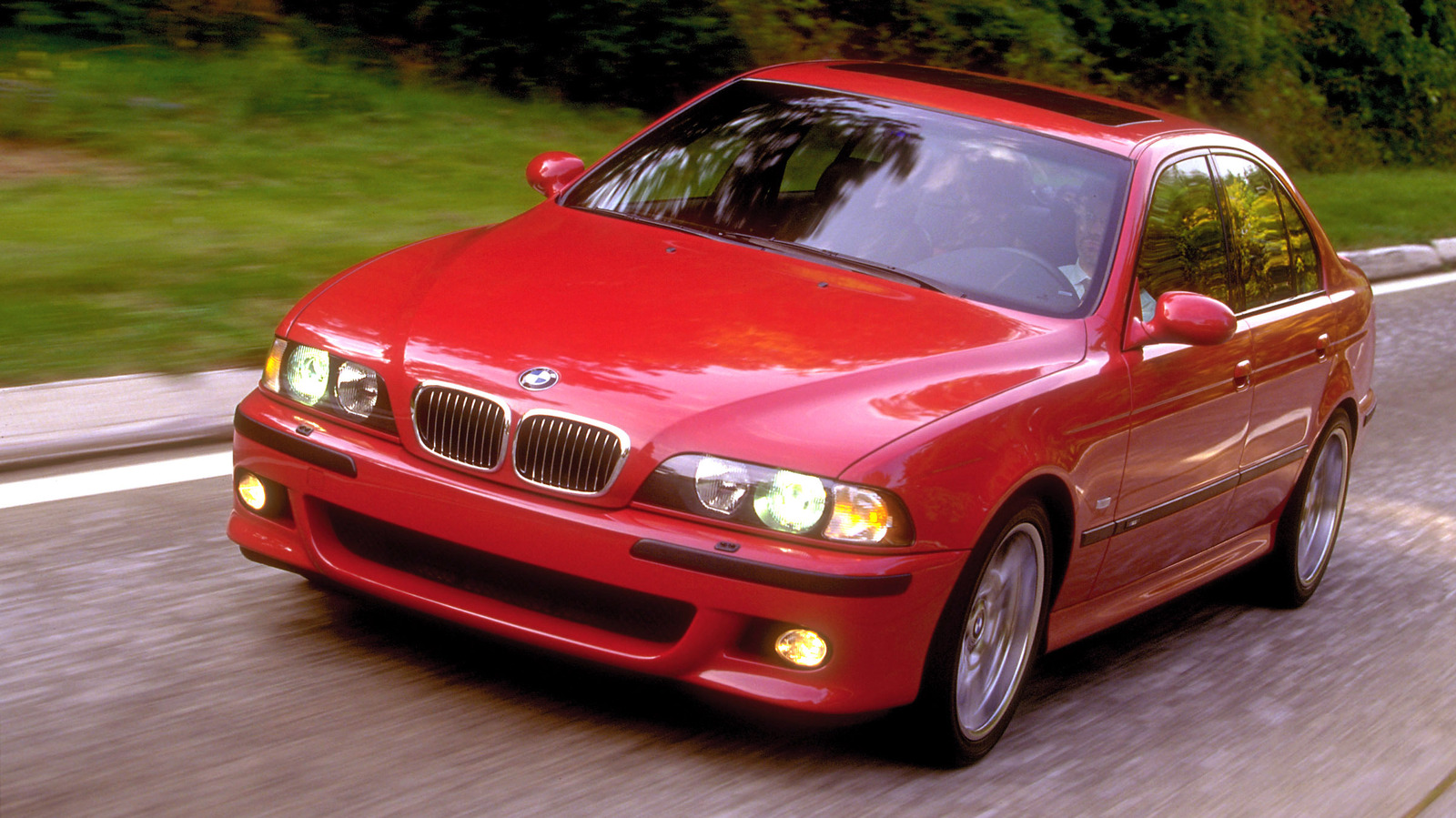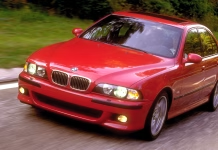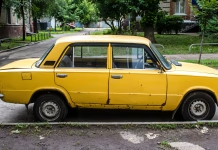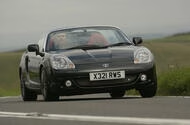Why You Shouldn’t Trust AI for Car Repair Advice

Inside BMW’s E39 M5: The Untold Battle Between Six and Eight Cylinders

America’s Car Comeback: A Surprising Symbol of the Future

Supreme Court Blocks Mass Payouts in Car Finance Mis-Selling Scandal Ending Compensation Hopes for...
 Supreme Court's ruling effectively puts to an end any mass compensation payout
Supreme Court's ruling effectively puts to an end any mass compensation payout
Lenders won't have to pay millions of pounds in compensation to buyers over potentially mis-sold finance deals following a Supreme Court ruling.
Announced on Friday afternoon, Lord Robert Reed ruled that buyers weren't mis-sold finance by dealers chasing high commissions.
In his verdict, he said he would also allow lenders to submit appeals against future cases brought forward by buyers, in effect putting to an end any mass compensation payout.
The case has been heard by the UK's highest court since April and was centred around non-discretionary lender-paid dealer commissions that were tacked on to car finance deals without the knowledge of buyers.
In some instances, it has been judged that salespeople acting as brokers were incentivised to charge higher interest rates so they could bank an increased commission.
The Supreme Court heard the case after the Court of Appeal ruled compensation should be paid by lenders where buyers were not informed about the commission.
How did this start?
It started with a case brought against Close Brothers and FirstRand Bank by three customers who claimed they were mis-sold finance deals. The trio had previously had their cases thrown out by lower courts.
Judges unanimously ruled to uphold their appeals, stating: “A broker could not lawfully receive a commission from a lender without obtaining the customer’s fully informed consent to the payment.”
This in effect bans dealers from profiting on finance deals unless the buyer gives their consent. The decision threw banks and dealers into a state of disarray, and the situation has been called the biggest finance scandal since PPI in the middle of the last decade
What was at stake for lenders?
Before today's ruling, the case threatened the long-established agreement that dealers receive commissions from banks or lenders for acting as a middleman when selling finance agreements on vehicles.
In anticipation, many car makers had begun to disclose commission rates to customers in order to continue business as normal.
Among those gearing up for the worst was Lloyds Bank, as the owner of Black Horse, a leading lender of car finance. In February, it revealed it had set aside £450 million to cover legal expenses and compensation payouts.
It follows an investigation earlier in 2024 by the Financial Conduct Authority (FCA) concerning discretionary commission arrangements (DCAs) sold between 2007 and 2020, after more than 10,000 complaints were made.
DCAs allowed dealers and brokers to adjust lenders’ interest rates to reward themselves with commission payments on hire purchase (HP) and personal contract purchase (PCP) deals.
In one complaint, the FCA stated, Black Horse was found to have allowed a dealer to set an interest rate of between 2.49% and 5.5%, with anything over 2.49% being paid to the dealer as commission. The dealer charged the highest rate of 5.5%, amounting to half of the customer’s total interest bill on the loan. In addition, the dealer didn't tell the customer it had set the interest rate or how much commission it had earned.
Trailblazing Pilot Anh-Thu Nguyen Dies in Tragic Indiana Plane Crash

Big Oil Pumps More Crude as Car Brands Face Uncertain Future

Genesis Reimagines Luxury Car Buying with Bold Showroom Expansion and Customer-First Approach
 Big-name retailers including Arnold Clark and Pendragon have invested in Genesis showrooms
Big-name retailers including Arnold Clark and Pendragon have invested in Genesis showrooms
The surge in growth this century of the Hyundai Motor Group (HMG) means it is now the world’s third largest car maker, behind only Toyota and the Volkswagen Group.
The third brand in HMG alongside Hyundai and Kia is premium newcomer Genesis, and “there is unwavering belief [within HMG] that it will be very successful,” says Ashley Andrew, Genesis UK managing director. “Then you’re just discussing the when and the how.”
Strong stuff, yet as the likes of Infiniti, DS and probably even Lexus will testify, launching a premium brand is about as tough a test as you can get in today’s car industry, particularly in Europe.
There is no modern precedent for a new premium brand consistently challenging the likes of Audi, BMW and Mercedes-Benz here, despite the proliferation of new brands in that time.
It’s just over four years since Genesis’s UK launch. Its strategy has since changed so significantly that it has effectively relaunched. It has gone from a direct sales model and a handful of ‘Spaces’ in shopping centres to plans to create 12 physical sites with retail partners. Seven are already up and running.
These are shared sites with Hyundai, with which Genesis’s back-end UK operations were merged in late 2023, although there is a “solid wall” between the brands. Any sites on top of these dozen are expected to be standalone Genesis showrooms.
Andrew, who also leads Hyundai in the UK, says the back-end merger gets Genesis in front of fleet buyers as part of conversations with Hyundai, and the showrooms get the brand’s cars in front of private buyers for the first time in a traditional way.
Still, Genesis has sold fewer than 1000 cars in the UK so far this year. But big-name retailers including Arnold Clark and Pendragon have invested in Genesis showrooms and Andrew says they have done so because these “investors understand Hyundai and know that the group succeeds with whatever they set out to do”.
For Genesis, Andrew says defining ‘success’ remains about “market awareness” and ensuring that every customer gets exceptional service as part of its philosophy of ‘son-nim’ – Korean for ‘honoured guest’. “It’s not about scale; it’s protecting that bespoke service as that’s how we differentiate ourselves,” he says.
Even so, having more Genesis cars on the road is clearly desirable for many reasons, among them the belief that “customers are the best advocates”.
France, Spain, Italy and the Netherlands will soon get Genesis cars for the first time, joining the UK, Germany and Switzerland in Europe. And just in case Genesis wasn’t being ambitious enough, it’s planning both a works entry at Le Mans next year and the launch of a performance sub-brand, Magma.
Severe Turbulence on Delta Flight Highlights Critical Importance of Seatbelt Safety

Why the Toyota MR2 Is the Last Affordable Mid Engine Thrill Ride You Can...
 Prices for earlier MR2s are on the rise, so is this your last chance to bag a mid-engined hero for a song?
Prices for earlier MR2s are on the rise, so is this your last chance to bag a mid-engined hero for a song?
Having pared as much steel, aluminium, plastic, rubber, fabric and glass from this car as they felt they could get away with, Toyota’s weight-shaving engineers reckoned that any driver of this sylphic machine should try just as hard to minimize the load.
To ensure that their mission was honoured, said engineers provided this car with laughably little storage space, unless you were prepared to travel one-up and use the passenger seat and its footwell to stuff in more stuff.
Toyota’s third generation MR2, which appeared in time for the new century’s dawn in 1999, had no boot, and so little room under the bonnet that the desperate could stuff only shoes or a washbag into the spare wheel to supplement the glovebox and a pair of small cubbies behind the front seats. A dirty weekend in this car would be just that. Toyota’s weight-saving aims trimmed the MR2’s heft to 960kg and usefully reduced its size compared to the previous model, besides providing a neatly folding hood. It wasn’t as light as a Lotus Elise which could weigh as much as 210kg less, but it was a lot more affordable, slightly more civilized and almost as much fun.
The simplification mission extended to this tiny Toyota’s specification, which provided the choice of one engine – a 136bhp 1.8 litre – and initially one five-speed gearbox. Later there would be an automatic, and later still the addition of a sixth speed for both transmissions. That added weight, and so did extra stiffening to the body’s nose and tail – not that it was a wobbler in the first place – and an increase in wheel diameter from 15in to 16in, but the revised 2002 MR2 was still a light car for light travellers.
The lightness made the 138bhp a lot stronger than it sounds, revvy romps to 62mph possible in 7.9sec, which was swift enough to be exciting on sinuous twisties. And very exciting on the test route of the European launch, held in the hills of a Mediterranean island whose name has shamefully slipped your reporter’s memory. It wasn’t hard to discover the MR2’s fine chassis balance on these roads, which seemed to have been sheened with graphite, diesel, sand or some other slippery substance that had you wondering at the Toyota’s roadholding, if not its controllability.
Later drives on roads closer to home soon confirmed that it was the surface, not the Toyota, that lacked grip. It was a car that was all about the driving, though in this case to the exclusion of almost everything other than rain, which was very effectively repelled by its neatly folding roof.
The result was a car that captured more of the character of the legendary 1985 MR2, and with the added bonus of a fully removable roof, if not a boot to add civility to any long-distance adventuring. Such inconveniences limited sales less than you might expect, the last of the line MR2 more common than you might expect.
This, and its no more than functional beauty, have allowed prices to plunge well below £3000 for hard-worked examples – like earlier MR2s, these machines are good for big six-figure distances, unless their engines suffer from disintegrating catalyst ingestion – despite their high entertainment quotient.
Why Bigger Tires Can Destroy Your Transmission and Cost You Big











